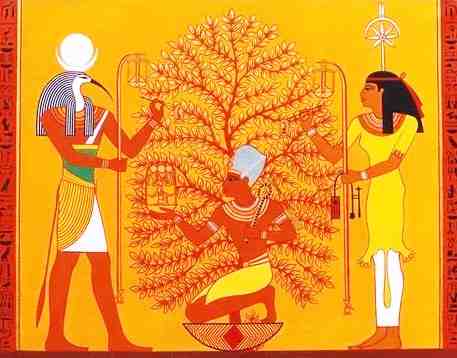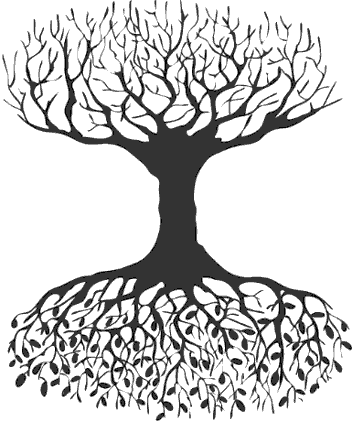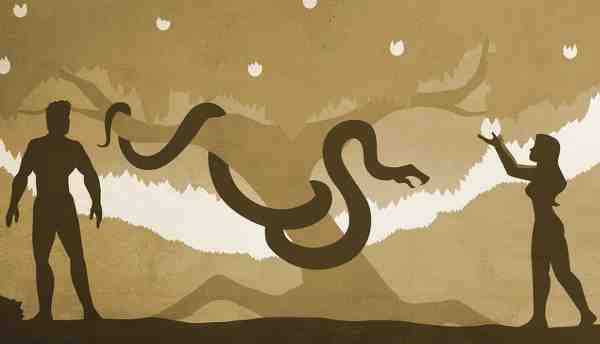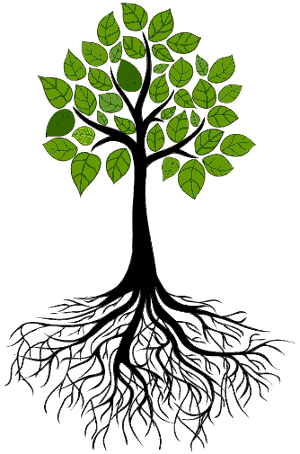
The Tree of Life is an ancient and mysterious symbol that has been found across various cultures throughout the world. What’s remarkable is that despite the symbol being present in diverse cultures, the meaning and symbolism associated with the tree are often strikingly similar.
For instance, a lot of ancient cultures depict the tree as Axis Mundi – or one that is located right in the center of the world. Similarly, many cultures believed that the tree served as a channel that connected the three realms of existence which include the underworld, earthly plane and the heavens. The tree is also often viewed as a symbol of creation, interconnectedness, and the source of all life on earth.
In this article, lets explore 15 ancient Tree of Life symbols from various cultures, examining their origin stories and deeper meanings.
15 Ancient Tree of Life Symbols Found Across Various Cultures
1. Mesopotamian Tree of Life

The Mesopotamian Tree of Life (which is widely regarded as the oldest depiction of the Tree) has been found across all ancient Mesopotamian civilizations including Assyrian, Babylonian, and Akkadian.
Its meanings are difficult to define, as we have little written history to reference regarding the symbol. Some illustrations (found on temple reliefs) posit the Tree as a palm, while others are simply a series of etched lines crossing each other. Almost all illustrations feature a god-like figure in a winged disc directly above the Tree of Life (as shown in the image above). This god has a ring in one hand and maybe the Mesopotamian Sun God Shamash.

Many believe the Mesopotamian Tree of Life was a mythical tree that grew at the world’s center. From this tree flowed the primordial waters of Apsu, the first vital water of the world.
Since Apsu eventually merged with other elements to create the first Mesopotamian gods, it’s clear the Tree of Life is primarily a symbol of life itself. No matter how it is drawn, the Tree represents new beginnings, fertility, connection, life cycles, and the ultimate goal of the individual.
Many scholars believe that in the Mesopotamian Epic of Gilgamesh, the “immortality” that Gilgamesh is searching for is actually the Tree. When Gilgamesh fails to attain this immortality, the Tree comes across as a representation of death’s inevitable arrival. Here, it symbolizes not only the beginnings of life but the life cycle as a whole, celebrating it as a natural progression.
2. Kabbalistic Tree of Life
The Kabbalah Tree of Life is a symbolic diagram that represents the nature of God, the structure of the universe, and the path that one needs to take to reach spiritual enlightenment. It consists of ten (sometimes eleven or twelve) interconnected spheres called sefirot and 22 paths that connect them. Each sefirot represents a divine attribute that God created to bring the world into existence.

The Sefirots can also represent the divine aspects we share with God. Since we cannot truly understand God in our current human form, the Tree offers a roadmap to take on divine attributes and become closer to the divine. In that sense, each of these divine attributes is a goal to work towards.
The sefirot are organized in three columns. On the left side are the more feminine attributes, and on the right are the masculine. The spheres in the center represent harmony that can be achieved by balancing the two sides.
The topmost sphere known as, ‘Keter’, represents the spiritual realm. It also represents the highest level of consciousness and the unity of all things. At the very bottom is the sphere called, ‘Malkuth’, which represents the physical/material realm. The spheres in between these two realms represent among many things, the path that needs to be taken in order to ascend from the egoic mind and unite with the divine.
The spheres in between are as follows along with what they represent:
- Chochmah (Wisdom) – Represents the creative spark and intuition.
- Binah (Understanding) – Represents analytical thinking and the ability to discern.
- Chesed (Mercy) – Represents love, kindness, and generosity.
- Gevurah (Strength) – Represents discipline, judgment, and strength. It also represents the idea of time.
- Tiferet (Beauty) – Represents harmony, balance, compassion, and consciousness of self.
- Netzach (Victory) – Represents perseverance, endurance, victory, and joy of existence.
- Hod (Splendor) – Represents humility, gratitude, surrender, intellectual nature and thought.
- Yesod (Foundation) – Represents the connection between the spiritual and physical worlds. It also represents imagination, visualization, and sense of being.
The tree structure is also comparable to the Hindu system of Chakras (energy centers). Just like the Chakras, the Kabbalistic Tree is an energy structure that lives and breathes through all of us.
It also magically fits into the sacred Flower of Life symbol as shown in the image below:

The Tree of Life features heavily in ancient Jewish and Kabbalistic practices. Even today, modern Jews use illustrations of the Tree in temple artwork and jewelry. Since religious iconography is forbidden in the Jewish religion, Tree of Life depictions act as a stand-in for religious art.
They are allowed in temples, homes, and décor because they do not represent God. However, these beautiful depictions still represent godly concepts like knowledge and wisdom.
3. Yggdrasil – Norse Tree of Life

For ancient Norse people, no symbol was more important and revered than Yggdrasil. Also known as the World Tree, this Tree of Life was a giant ash tree upon which rested the entire universe. It was the Nordic Axis Mundi or the center of the world. Yggdrasil stretched into every plane of existence, with both heavenly and earthly realms utterly reliant on it.
If anything were to disturb or destroy the tree, life would end. Their belief system had no room for a world without Yggdrasil and posited that the tree would never die. Even in the event of Ragnarök, the Norse Apocalypse, the tree would only be shaken—not killed. It would destroy the world as we know it, but new life would eventually grow from it.
The symbol is quite complex and has many subtle interpretations. At its core, it represents interconnection, cycles, and nature’s supreme vitality. It tells a story of creation, sustenance, and eventual destruction, encompassing the life of the individual, our planet, and the whole universe.
Yggdrasil’s three mighty roots were each extending into a different realm—one in the giants’ kingdom of Jotunheim, one in the heavenly world of Asgard, and the other in the icy planes of the underworld Nilfheim. In this way, Yggdrasil connects the upper, middle, and lower parts of the world. This reflects the passage of time for humans as they are born, grow, and die. It also represents the connection between states of consciousness and learning.
From the tree’s base flow life-giving waters, but various creatures are also eating away at the roots. This connection represents the intrinsic interdependence of the universe and the ultimate truth that there can be no creation without destruction. Death is necessary to uphold and continue the life cycle.
4. Baobab – African Tree of Life

Anyone traveling the plains of Western Africa will glimpse the iconic Baobab Tree – which is considered the African Tree of Life. With many Baobabs reaching over 65 feet high, it is an unmistakable giant in a landscape filled with shorter, stubby growth. The Baobab is a massive succulent, storing water in its trunk so it can thrive even in the harshest, hottest conditions. Just like the people living around it, the Baobab is a stalwart and steady survivor.
This tree is unmistakable and vitally important—many African cultures rely on it for food, medicine, shade, and commerce. In light of this, it’s no surprise that the Baobab is an important symbol. This Tree of Life is a literal and metaphorical representation of life, harmony, balance, sustenance, and healing.
The Baobab gives all. Extreme droughts are common where it grows, and people tap the Baobab tree to obtain water when wells run dry. They take shelter in hollowed Baobabs to escape the sun and rain, and sew its bark into clothes and rope. People also create soap, rubber, and glue from various parts of the tree, selling it to make a living.
Baobab fruit is one of the most nutrient-dense fruits on earth, feeding people and animals daily. Many people harvest the bark and leaves to create traditional medicine or use it in ritual ceremonies. Baobab trees are also often used as gathering places for the community. They are a safe haven where people come together, talk, and connect.
5. Egyptian Tree of Life

The Acacia Tree was vitally important to ancient Egyptians and featured heavily in their mythology. It was considered the Tree of Life that gave birth to the first gods of Egypt. The Acacia is one of the only trees available in the harsh Egyptian desert, so it was the only wood around that people could use for construction. As such a critical material, Acacia was highly prized. It enabled people to build shelters and fires, eventually becoming regarded as a Tree of Life.

Ancient Egyptians associated the goddess Lusaaset with the Acacia tree. Lusaaset was one of the oldest goddesses, the grandmother of all other deities. She was an original life-giver, a goddess of fertility and cosmic strength. Lusaaset ruled over the oldest Acacia tree in ancient Egypt, located in the Garden of Heliopolis.
This tree separated the world of the living and the world of the dead. It symbolized the duality of these two planes, with some sources citing it as a portal by which living people could access different realms. For a living soul to get in touch with Lusaaset, they could brew a special wine from the hallucinogenic Acacia tree. Priests regularly drank the wine during religious ceremonies, and Lusaaset would ground them and guide them on their spiritual journey.
6. Inverted Tree – Hindu Tree of Life

In the Uanishands and Bhagavad Gita (Holy books of Hindus), you come across the concept of the inverted tree of life. This is a tree that grows upside down with its roots above (toward the sky) and the branches below (toward the ground).
This tree is said to represent spiritual enlightenment or freedom from the egoic mind. The roots of the tree represent your powerful subconscious mind which is often hidden but dictates your life based on the information (beliefs) it contains. The trunk is the conscious mind and the branches represent the direction of your life that is determined by the hidden beliefs in your subconscious mind (or the root). When the tree is inverted, the roots get exposed.
This symbolizes becoming conscious of the subconscious (or one that is hidden). The roots facing skyward also represent the mind attaining higher spiritual powers and ascending toward higher spiritual realms.
7. Tree of Eden

Christians ascribe great importance to the Tree of Eden. Otherwise known as the Tree of Knowledge, it was a mystical tree that rested in the Garden of Eden. Christian mythology posits this tree as the Axis Mundi of Eden, an oasis for humankind that protected them from all evil.
The story goes that the original humans were Adam and Eve, and they lived in the Garden of Eden. They were blissfully ignorant of the conceptual existence of good and evil. God forbade them from eating the fruit of knowledge to test their faith and obedience, but they disobeyed. When they ate the fruit, they became aware and enlightened. As such, they were cast out from the Garden of Eden.
However, the outside world was not a desolate and barren landscape. It was fraught with many hardships and required learning and growth, but thriving in such an environment was not impossible. In that sense, the Tree of Eden symbolizes rebirth and adaptability. It was the start of life as we know it, a symbol of our beginnings on the imperfect earth we are familiar with.
The Tree of Life finds many mentions in the Bible, the notable ones being Genesis 2.9, which says, “The Lord God made all kinds of trees grow out of the ground—trees that were pleasing to the eye and good for food. In the middle of the garden were the tree of life and the tree of the knowledge of good and evil.”
Other mentions include Proverbs (3:18; 11:30; 13:12; 15:4) and Revelation (2:7; 22:2,14,19).
8. Crann Bethadh – Celtic Tree of Life

The Crann Bethadh, or Celtic Tree of Life, is commonly symbolized by an Oak tree. Its branches are generally shown to extend skyward while its roots intertwine in a distinctive Celtic knot pattern.
The ancient Celts worshipped trees. They believed that trees had magical powers and were the source of all life. Trees were not only thought to be doorways to higher spiritual realms but also providers of blessings and prosperity. Additionally, trees were associated with strength, wisdom, endurance, and longevity. They symbolized the cycle of life and the interconnectedness of all living things and the cosmos.
The Celts believed that the roots of the Crann Bethadh extended deep into the underworld, its branches extended towards the heavens, and its trunk remained within the earthly plane. This way the tree acted as a conduit that connected all three realms of existence. By connecting with the tree, one could gain access to higher realms and other planes of existence. The Crann Bethadh was also believed to hold the knowledge of the past, present, and future, and the power to grant wishes and bring good luck.
9. KalpaVriksha – Celestial Tree of Life

Source
According to Hindu mythology, the KalpaVriksha is a divine tree that grows in heaven, and is considered to be a celestial version of the Tree of Life. This tree is believed to have the power to grant wishes and symbolizes prosperity, abundance, and spiritual fulfillment. The tree is also associated with the gods and goddesses of Hinduism, and is believed to be a source of divine blessings and boons. The KalpaVriksha is described as having golden leaves and was surrounded by lush foliage and a profusion of fruits and flowers.
The KalpaVriksha is believed to have originated during the Samudra Manthan, the great churning of the ocean by the gods and demons. According to the mythological tale, the gods and demons joined forces to churn the ocean in order to obtain the elixir of immortality, known as Amrita.
As the ocean was churned, several celestial beings and objects emerged, including the KalpaVriksha, the Wish Fulfilling Tree. The tree was said to be a divine creation, gifted to the gods by the ocean, and was believed to possess magical powers that could fulfill all desires.
10. Austra’s koks – Latvian Tree of Life

In Latvian mythology, the concept of the tree of life is represented via the Austras Koks (Tree of the Dawn or Sun Tree) symbol. It is believed that this tree grew from the Sun’s daily journey across the sky. The tree is usually represented as an oak, with silver leaves, copper roots, and gold branches. The roots of the tree are associated with the underworld, the trunk with the earth, and the leaves are linked to the spiritual heaven.
The image of the tree is used in Lativa as a lucky charm & also as a symbol of protection. The tree is mentioned in Latvian folk songs and is found in Latvian folk motifs.
11. Yaxche – Mayan Tree of Life

The ancient Mayans considered the Yaxche (represented by a ceiba tree) as the sacred tree of life that held the sky with its branches and the underworld with its roots. It was viewed as a symbol of creation and interconnectedness.
According to Mayan mythology, the Gods planted four Ceiba trees in the four cardinal directions – red in the east, black in the west, yellow in the south, and white in the north – to hold up the heavens, while the fifth Yaxche tree was planted in the center. This fifth tree served as a sacred connector between the Underworld, Middle World, and the Heavens and served as a portal through which human souls could travel between these three realms.
In addition, it was also believed the only way Gods could travel into the Middle World (or Earth) was by using the tree. This is why the tree was considered especially powerful and sacred. So the four Yaxche trees (in the four corners) represented the cardinal directions and the central tree represented the Axis Mundi, as it was located at the central point of earth.
12. Ulukayin – Turkish Tree of Life

In Turkish communities, the Tree of Life is known by many names including Ulukayın, Paykaygın, Bayterek, and Aal Luuk Mas. This tree is usually depicted as a sacred beech or pine tree with eight or nine branches. Similar to the Crann Bethadh (discussed earlier), the Turkish tree of life is said to represent the three plains of existence – the underground, the earth and the heavens. The root of this tree is said to hold the underground, the branches hold the sky and the trunk acts as a portal that connects these two realms.
As per Turkish mythology, this tree was planted by the creator God Kayra Han. Goddess Kübey Hatun, who is a birth goddess is said to reside within the tree. This goddess is often depicted as a woman with a tree for a lower body and is believed to be the mother of the first human, Er Sogotoh. Er Sogotoh (whose father is God) is considered to be the ancestor of all people on Earth. Thus the Tree of Life is considered the source of all life.
13. Bodhi Tree – Buddhist Tree of Life

The Bodhi Tree (Sacred Fig Tree) is an iconic symbol in Buddhism (as well as Hinduism) and is revered as the Tree of Life. According to Buddhist tradition, it was under the Bodhi Tree that Siddhartha Gautama, achieved enlightenment, becoming the Buddha.
The Bodhi tree is considered the Axis Mundi that represents the center of the universe. The tree also represents interconnectedness of all life, as its branches and roots intertwine, representing the interdependent nature of existence. In addition, the tree symbolizes, liberation, and spiritual awakening.
14. Akshaya Vata

Akshaya Vata is literally translated as “immortal tree” and is a sacred Tree of Life symbol for Hindus. Often mentioned in Hindu scriptures, the Akshaya Vata is a banyan tree said to be the oldest on Earth. As legend has it, the goddess Sita blessed the banyan tree with immortality. Ever since, it has been providing vital spiritual guidance, connection, and meaning for followers of the Hindu faith.
The Akshaya Vata is a symbol of the earth’s power and the continuous processes of life, death, and reincarnation so important to the Hindu belief system. It celebrates the sacred creator, symbolizing creation, destruction, and life’s eternal cycles.
Many people use banyan trees in general as a spiritual representation of Akshaya Vata. Childless couples may perform rituals with Banyan trees to have children, while others pray and worship at the base of banyans. It is said that banyan trees hold many blessings and can grant wishes, answer prayers, and provide longevity and prosperity.
Many believe the Akshaya Vata is a real, tangible tree located in the Indian city of Prayagraj. Others believe it is a different tree located at Varanasi, and others are sure that the Akshaya Vata is in Gaya. Most likely, all of these three sites held great importance to ancient Hindus.
The tree in Prayagraj is the most widely known. Legend dictates that invaders tried to cut this tree, and tried to kill it in many ways, but the tree would not die. Because of this, the site of this tree is sacred and closed to the public.
15. Rowan – Scottish Tree of Life

The Rowan is the Tree of Life for the Scottish people. It thrived even in the windy conditions of the Scottish highlands, a beacon of strength, wisdom, thoughtfulness, bravery, and protection. The Rowan is a unique tree that remains beautiful throughout every season, serving different purposes and fulfilling various needs through each stage of its life cycle.
In fall and wintertime, the Rowan provides vital nutrients, wine, and spirits through its fruit. In spring, it blossoms beautifully and helps pollinate the world. In summer, its green foliage provides shade and rest. Celtic people believed the Rowan Tree also provided divine protection against witchcraft and evil spirits.
People used sticks and twigs from Rowan trees in divination and often utilized their branches and leaves for ritual practice. Even today, these trees grow next to houses in the Irish and Scottish countryside. They are still regarded as important symbols of life and the seasons’ change.
Conclusion
The symbols we have explored so far are just a few examples of how the Tree of Life has been depicted across ancient cultures. This powerful symbol appears in many other cultures, including Chinese, Japanese, Greek, Roman, Peruvian, Harappan, Mesoamerican, Bahai, and Austrian, to name just a few.
Despite the geographical and cultural differences between these societies, the Tree of Life has striking similarities in its representation across all of them. This certainly raises the question: was there actually a world tree at the center of our world? Or could the Tree of Life be a reference to something more subtle, such as the nervous system or energy centers within our bodies? Whatever the answer, this mysterious symbol certainly warrants further looking into.
If the Tree of Life symbol resonates with you, consider incorporating it into your spiritual practices which will help you gain deeper insights into its mystical symbolism.







